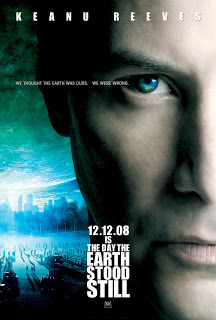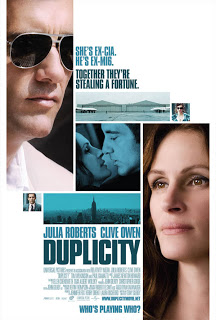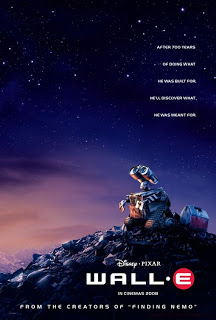
 This Flick-Off is a guest post from Bitch Flicks follower kb.
This Flick-Off is a guest post from Bitch Flicks follower kb.
In The Day the Earth Stood Still, the alien Klaatu (Keanu Reeves) is a diplomat for a group of intergalactic civilizations who lands in Central Park to speak with the world leaders of the human race at the U.N. His intention is to “save the Earth” by reasoning with them to change their way of life so they do not destroy the planet. When U.S. leaders respond with unilateral violence instead, Klaatu begins the process of collecting the animal life forms of the Earth’s various ecosystems in globular “arks” before unleashing a swarm of self-replicating nanobots to destroy human civilization, thus saving Earth from us.
Eventually, with the help of Karl Barnhardt (John Cleese), a physicist who won the Nobel Prize for his work on biological altruism, Helen Benson (Jennifer Connelly), an astrobiologist at Princeton, convinces Klaatu that humans can indeed change, and he interrupts the attack of the insect-like bots.
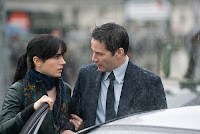 The remake of The Day the Earth Stood Still‘s fraudulent feminism is exposed in how Klaatu (Reeves) is finally convinced to spare humanity in his bid to “save the Earth.” In a supposedly progressive way, the remake turns the traditional stay-at-home mother of the 1951 original (Patricia O’Neal) into a Princeton astrobiologist who is important enough to be put on a “vital list” of scientists and engineers who the U.S. government calls upon in the event of an imminent collision of “Object 07/493” with Manhattan. However, this liberal update is nothing but subterfuge.
The remake of The Day the Earth Stood Still‘s fraudulent feminism is exposed in how Klaatu (Reeves) is finally convinced to spare humanity in his bid to “save the Earth.” In a supposedly progressive way, the remake turns the traditional stay-at-home mother of the 1951 original (Patricia O’Neal) into a Princeton astrobiologist who is important enough to be put on a “vital list” of scientists and engineers who the U.S. government calls upon in the event of an imminent collision of “Object 07/493” with Manhattan. However, this liberal update is nothing but subterfuge.
Throughout the movie, Benson (Connelly) tries repeatedly to persuade Klaatu that humans can change, including taking him to see Professor Barnhardt (Cleese). The unflappable Klaatu begins the process to end the world anyway, and remains unconvinced by Barnhardt’s syllogistic arguments. In the film’s climatic moment of revelation, Klaatu sees Benson consoling her stepchild (Jaden Smith) at his father’s grave.
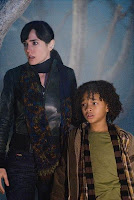 Only after witnessing a mother’s love does Klaatu feel that there is another side to humans (besides their unreasonable and destructive one), and curtail the attack of the killer nanobots. Unwittingly then, Benson changes Klaatu’s mind based on the advice Barnhardt gave her as they fled his house: “Change his mind not with reason, but with yourself.” In your standard anti-feminist fare, Barnhardt’s advice can only mean one of two things. Being a family-friendly film, the remake of Day passes on Benson’s seduction of Klaatu, deciding instead to confirm that she is a mother first and foremost, her position as scientist at a prestigious American university be damned.
Only after witnessing a mother’s love does Klaatu feel that there is another side to humans (besides their unreasonable and destructive one), and curtail the attack of the killer nanobots. Unwittingly then, Benson changes Klaatu’s mind based on the advice Barnhardt gave her as they fled his house: “Change his mind not with reason, but with yourself.” In your standard anti-feminist fare, Barnhardt’s advice can only mean one of two things. Being a family-friendly film, the remake of Day passes on Benson’s seduction of Klaatu, deciding instead to confirm that she is a mother first and foremost, her position as scientist at a prestigious American university be damned.
